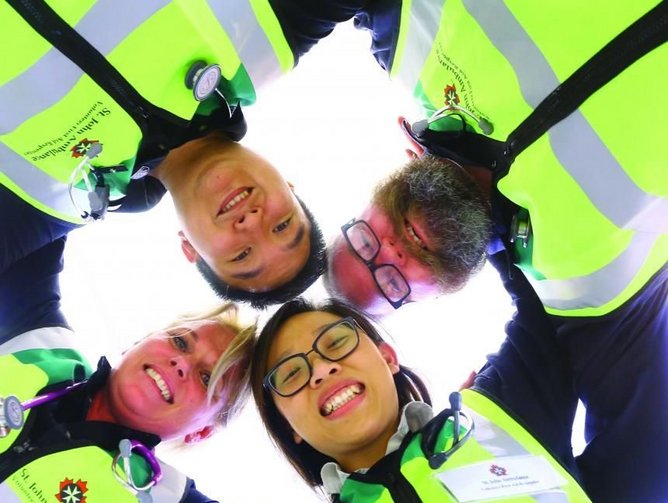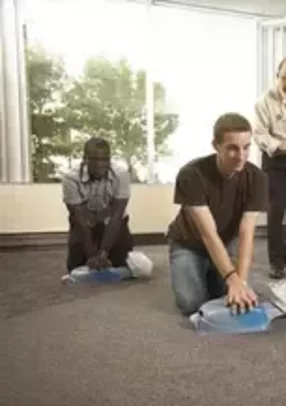Across the globe, organizations are employing technology to find new and improved ways of conducting their operations, with benefits on offer to both the newest startups and the most venerable institutions. St. John Ambulance Canada (SJA) can trace its lineage back over 900 years, with the modern Canadian organization founded in 1883. The charity is dedicated to helping Canadians via health and safety training courses and first aid volunteers.
“We have two different aspects to what we do,” says Shawn McLaren, Chief Learning Officer. “One is first aid training. We train over 500,000 people a year in first aid and CPR. There are various advancement courses – anything from a basic one-day course to courses that are 80 hours long teaching advanced first responder skills. The other side of what we do is our volunteering. We train people to become medical first responders. They still hand over to paramedics when necessary, but they receive upwards of 40 to 80 hours of training to act as a bridge.” To fund its activities, the charity relies on the first activity to fund the latter, as Director of Information Systems and Technology James Williamson explains. “We sell first aid training, and that is then turned into community service via volunteers and first aid representatives at, for instance, sports venues, conventions, and other outdoor and indoor events. We also give back through therapy dog programs and similar services across the country.”
To further support such activities, Williamson has helped to institute a program of digital transformation inside the organization. One of the challenges of operating a national charity, especially in a country as vast as Canada, is ensuring the smooth communication of its constituent parts. “We are a federated organization where each provincial chapter is its own legal entity, and our national office serves to supply the shared enterprise applications. Right now, they are all hosted at a data center run by a third party, but as part of the digital transformation we are moving to cloud-based services. That allows us to get away from expensive, cyclical hardware and capital costs and constant upkeep and maintenance.”
Williamson is seeking to build a strong base from which the charity’s activities can be supported. “We're focusing primarily on foundational changes. We are moving to Office 365 and Dynamics 365 as a core platform since we already had experience with Microsoft’s existing legacy applications. Then, we’re building upon that with a new website integration where we're building a learning management system. Ultimately, we want to look at volunteer management, fundraising, and automating manual workflows.” To support that work, SJA has also been implementing upgrades to its network. “We’re working with Rogers to increase our bandwidth from a 50 Mbps connection to a gigabit. With everything being based in the Cloud, having a stable, symmetrical fiber connection is important.”
From these strong foundations the charity can perform its critical functions. On the teaching side of the equation, opportunities have been found to introduce technology to benefit learners, as McLaren explains. “Our new learning management system that we're planning to bring in will allow us to provide digital badges and an online presence for people to note their certifications, which will speed up the process. We found a partner in D2L that meets all of our external and internal training needs.” An upgraded website is also aiding learning. “We’re reworking our website to a modern UI/UX, making it easier for people to search for courses, providing higher rankings in our SEO for the website and the ability to see the correlations in the courses people take,” says Williamson.
It remains important, however, to ensure a balance is struck between the digital and the physical, particularly in the realm of first aid training. “First aid is a tricky thing in that you can never have a fully online first aid class because the skills have to be observed,” says McLaren. “I'm not certain that we'll ever see a fully automated online course. We can, however, with the inclusion of our state of the art LMS system, enhance the blended learning experience, and make it more appealing for people to take classes. Our typical first aid classes are two days, but a blended approach allows them to do eight hours of online training at their leisure before attending a full day course.” Such blended learning takes a number of forms at SJA, including a move towards using e-books for teaching. Another advancement takes advantage of an upgraded manikin. “We're slowly moving towards what are called feedback manikins. They measure the depth and speed of your push, and we've been piloting ones that will display that information onto a whiteboard for the whole class. Adult learners like the idea of gamification, and having races is one of the functions we can do with it, which really engages people.”
The future for SJA sees the charity bring its work to new and exciting areas. “We're expanding to law enforcement, military and aboriginal first aid programs,” explains Williamson. “The goal is not only to be the biggest, but to be the best and to turn that revenue back into community service. We're also trying to refocus on engaging youth to become lifelong first aiders.” To coordinate that ever-growing stable of volunteers, future innovations will also focus on volunteer communication, as McLaren explains: “There are tools to allow self-check-in and mass communication to volunteers, top-down and bottom-up, that we're looking to hopefully leverage in 2020.” Ultimately, the transformation occurring at St. John Ambulance is always in the service of improving the scope and reach of the functions it provides. “There's so much opportunity to do good for both the organization and people out there, which is what excites me about my position,” says Williamson. “Success is its own reward, and I look forward to seeing what version two, three and four of our transformation will look like.”




